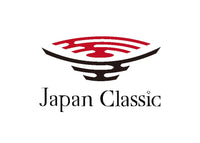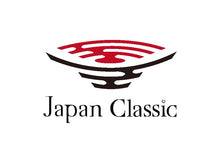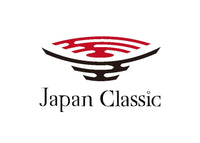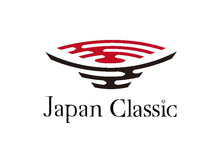How to Choose the Best Japanese Rice Bowl: Material, Size & Style Guide
Imagine sitting down for a meal, the aroma of freshly cooked rice rising from a beautifully crafted bowl. As simple as it sounds, the Japanese rice bowl is much more than a vessel; it’s a blend of history, artistry, and function.
Picking the perfect Japanese rice bowl requires more than just looks, it’s about material, size, style, and authenticity. This guide will help you navigate these choices with ease.
By the end, you’ll be ready to select premium rice bowls that blend tradition with everyday practicality, and get to know why it holds such a special place in Japanese culture and dining.
Understanding Japanese Rice Bowls
A Japanese rice bowl (called ochawan in Japanese) is specially designed not only to hold rice but also to fit comfortably in the hand and complement traditional Japanese meals.
Typically made of pottery or porcelain, these bowls range in style from simple and rustic to elegant and artistic. Their sizes and shapes are optimized for ease of use with chopsticks, making them an essential piece of Japanese tableware.
Choosing by Material: What Makes the Best Japanese Ceramic?
Porcelain
Porcelain is renowned for its delicate yet durable nature. It’s lightweight, often thin, and perfect for showcasing intricate designs and vibrant glazes.
Bowls made from Japanese ceramic porcelain, like the White Porcelain Rice Bowl crafted by Tetsuya Kobayashi are elegant and often prized for their refined beauty. Porcelain may be more prone to chipping, so handle with care for longevity.
Stoneware
If sturdiness is a priority, stoneware bowls offer excellent durability with a weightier feel and earthy texture. These bowls often feature a natural finish with subtle imperfections celebrated in traditional Japanese ceramics, adding a grounded, artisanal touch.
Stoneware is ideal for everyday use due to its resistance to wear and cracking.
Size Matters: Finding the Perfect Fit for Your Table

The size of a rice bowl is more than a simple choice; it reflects cultural dining habits and personal preference.
• Standard size: Bowls with a diameter of 10-12 cm and a height of 5-7 cm are most common. This size suits an average serving of rice and fits comfortably in hand, balancing functional and aesthetic considerations.
• Smaller bowls: Ideal for children or light eaters, smaller bowls can be charming and easier to handle.
• Larger bowls: These hold generous portions, perfect for rice bowls doubling as donburi (rice topped with other dishes).
For example, the Small Annam Red-Glazed Rice Bowl crafted by Minami Kiln is perfect for those who prefer smaller servings or side dishes.
Exploring Styles: Traditional vs. Modern Japanese Rice Bowls
Japanese ceramic rice bowls come in styles influenced by regional artisanship and kitchen needs:
• Traditional bowls embrace wabi-sabi aesthetics, embracing the beautiful imperfection of handmade ceramics and natural textures.
• Modern bowls may showcase minimalist designs or bold contemporary glazes that integrate with Western dining concepts.
Why Handmade Ceramics Are Worth the Investment

Choosing handmade ceramics means investing in artistry as well as functionality. Each piece is unique due to the artisan’s touch, making your rice bowl a work of art that also fulfills daily use needs.
• Artisans use locally sourced clay and glazing techniques passed down generations.
• Handmade bowls tend to have better thermal properties, keeping rice warm longer.
• Supporting handmade Japanese ceramics supports cultural preservation and skilled craftsmanship.
How to Care for Your Japanese Rice Bowl: Tips for Longevity
Proper care will keep your bowls beautiful for years:
• Avoid sudden temperature changes to prevent cracking.
• Use gentle detergents and avoid abrasive scrubbing.
• Some handmade ceramic bowls are dishwasher-safe, but handwashing is recommended generally.
• For lacquerware, avoid soaking and dishwashers to protect the finish.
Learning best care practices helps maintain the premium quality and look of your bowls, enhancing your overall dining experience.
Matching Your Bowl with Other Tableware for a Cohesive Meal

A beautifully crafted Japanese ceramic dinnerware set enhances every meal. Consider pairing your rice bowl with:
• Traditional Japanese chopsticks made from bamboo or wood.
• Complementary plates like ceramic or porcelain dinner plates.
• Stylish Japanese bowls for sharing side dishes.
The interplay of textures and colors creates an authentic dining atmosphere reflecting Japan’s rich culinary culture.
Popular Japanese Rice Bowls
Check out some standout rice bowls offering authenticity and style:
1. White Porcelain Rice Bowl - Crafted By Tetsuya Kobayashi
View product
A refined and delicate porcelain bowl with a pristine white finish. This bowl exemplifies the elegance of Japanese ceramic porcelain, perfect for those seeking a minimalist yet sophisticated touch for their tableware. Ideal for daily use or special occasions.
2. Small Annam Red-Glazed Rice Bowl - Crafted By Minami Kiln
View product
Featuring a vibrant red glaze with artisanal finishing, this smaller bowl's size makes it excellent for side servings or lighter meals. The bold color and handmade character embody the spirit of handmade pottery from traditional kilns.
3. Tokusa Rice Bowl Green - Crafted By Masashi Sato
View product
This bowl showcases a beautiful green glaze with natural leaf-like patterns, bridging traditional Japanese ceramics with fresh, natural hues ideal for lively dining setups. Well-suited for those who appreciate organic aesthetics.
4. Small Rice Bowl with Inside and Outer Calendar - Crafted By Sozan kiln
View product

A unique piece featuring a calendar design both inside and outside the bowl, blending functional art into dining. This collectible piece highlights the creativity found in handmade Japanese ceramics.
5. Japanese Rice Bowl Asia Blue and White - Crafted By Kakurin Kiln
View product
Classic blue and white porcelain with traditional Asian motifs, ideal for lovers of authentic Japanese ceramic dinnerware that reflects centuries-old artistic heritage.
6. Blue Rice Bowl - Crafted By Shinichi Kotsuji
View product
A vibrant blue glaze encases this bowl, combining modern stylistic flair with traditional craftsmanship, perfect for adding color depth to your ceramic tableware collection.
7. Six Gourd Rice Bowls - Crafted By Pottery Raku
View product
This set features six uniquely shaped bowls inspired by gourds, reflecting organic forms and handmade charm typical of handcrafted ceramics from Japan's Raku tradition.
8. Red Dotted Grid Pattern Rice Bowl - Crafted By Fukuho Kiln
View product
Detailed with a red dotted grid pattern, this bowl elegantly blends geometric design with subtle traditional flair, perfect for those who want both style and tradition.
9. Olive Rice Bowl Rust - Crafted By Koso Kiln
View product
Sporting a rustic olive and rust-toned glaze, this bowl speaks to fans of earthy palettes and natural finishes, embodying the warmth of traditional Japanese pottery vase styling in a functional bowl form.
10. Small White Slip Rice Bowl - Crafted By Junichi Mashiko
View product

A simple yet elegant white slip-glazed bowl that pairs beautifully with any Japanese table setting. Its timeless design emphasizes the purity and subtle texture of handmade ceramic bowls.
All these bowls represent premium tableware that fits various styles and sizes, made with craftsmanship you can trust
Frequently Asked Questions (FAQ)
Q: Are Japanese rice bowls microwave safe?
A: Many ceramic bowls are microwave safe, but always check product details and avoid lacquerware in microwaves.
Q: How do I know if my bowl is authentic Japanese ceramic?
A: Authentic bowls will often be marked by the artisan or kiln, use quality clay, and show craftsmanship typical of traditional Japanese pottery.
Q: What makes a bowl suitable for gift-giving?
A: Elegant packaging and beautifully designed bowls, often sold in sets, make perfect gifts for housewarmings or weddings.
Q. What is the best material for a Japanese rice bowl?
A. Porcelain is best for delicate designs and everyday use if handled carefully, while stoneware offers durability and an earthy look. Wooden lacquerware bowls add warmth and tradition.
Q. How do I choose the right size rice bowl?
A. Choose a bowl size that fits your typical rice serving. Standard bowls are 10-12 cm in diameter, but smaller or larger options exist depending on appetite and use occasion.
Q. Can I use a Japanese rice bowl for other dishes?
A. Yes. Many bowls double as soup bowls, donburi bowls, or even for desserts like ice cream, showcasing their versatility.
Bringing It All Together: Choosing Your Perfect Japanese Rice Bowl
Selecting the ideal Japanese rice bowl means balancing quality tableware with your personal style and practical needs. Whether you seek the delicate finesse of handmade pottery, or the rustic charm of stoneware pieces, each bowl brings something unique to the table.
Remember to consider material, size, and style while appreciating the cultural heritage behind these authentic Japanese plates.
Browse Japan Classic to find a curated selection of premium handmade Japanese ceramics rice bowls crafted by master artisans.
Find your perfect bowl and bring a piece of Japan’s rich ceramic heritage to your table now!




Leave a comment